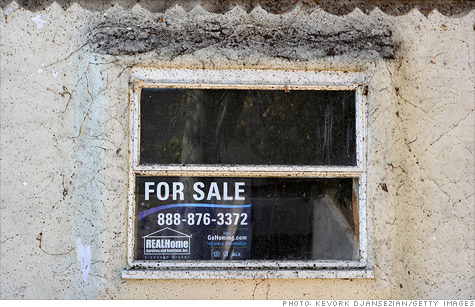Once a year, leaders of Community Options come together from its 35 locations for a retreat. The nonprofit organization runs a variety of entrepreneurial ventures that create job opportunities and provide housing for people with disabilities.
At the most recent summit, the chief financial officer was bemoaning the wasted flowers at the organization's New Brunswick, N.J. floral store, due to the inevitable difficulty in managing inventory to meet customer orders.
Listening in, a graphic designer from Community Options' Daily Plan It, which rents shared office space and provides support services such as document shredding, thought they could use the dead, unsold flowers to create potpourri. As a result, Community Options is now launching a line of potpourri, which will be packaged and sold by people with disabilities.
"It's all because a group of people got together and came up with this idea," says Robert Stack, founder and chief executive of Princeton, N.J.-based Community Options. "People play off each other."
In a world of video conferencing, cloud computing, and shared online workspaces, it's easy to imagine that people can work together from anywhere, just as if they were sitting in the cubicle next door.
It's true that telework reduces pollution, improves productivity, and cuts real estate costs for employers while increasing retention and employee loyalty. But no matter how advanced the technology, something is lost when face-to-face contact disappears.
Indeed, a new report found that the number of teleworkers declined in 2010 for the first time since data collection began nearly a decade ago. While there's no denying that telecommuting can provide tremendous benefits, organizations are finding that virtual collaboration has its limits.
"We've tried the cloud stuff; it's good. We've tried the Skype where you have four or five people on the screen. It ain't the same thing," says Community Options' Stack, who holds quarterly in-person meetings for each region in addition to the annual summit. "Collaboration and cross-pollination of ideas doesn't happen by me sending you an email and you sending one back."
When face time trumps convenience
WorldatWork, a human resources association, found that the number of people who telecommuted at least one day a month in 2010 dropped to 26.2 million, down from 33.7 million in 2008, in a report released earlier this year. Even with the drop, teleworkers represent 20% of the working adult population.
WorldatWork argues that the uncertain economy has heightened employees' fears that they risk losing their job if they are not seen. "We found that teleworking went down during the most recent economic downturn, more due to a mindset than to an organization's change in policy," says Rose Stanley, work-life practice leader for WorldatWork.
To be sure, a slight majority (54%) of the decline in remote workers is attributed to a rise in unemployment levels over the past few years, according to WorldatWork's survey; the remainder was attributed to factors such as employees' fear of retribution and increased use of independent contractors by employers.
The association recommends that employees who work remotely visit their home office at least once a quarter. "You have to put in place ways for that employee to reconnect to their co-workers," Stanley says.
Peter Wride, 27, understands well the limits of telecommuting. He was hired to manage a sales team for an online school based in Texas -- when he was based in Utah. Aside from an initial week in Texas, he relied on quarterly in-person meetings with his staff and other colleagues.
"It became hard to deal with different people in the company who I was meeting for the first time over the phone," Wride recalls. "I'd show up in person and spend a week putting out fires or trying to meet people so the next time I had to call them, I had a bit of a relationship with them."
Under his leadership, his team boosted profits at the school by 200%, but he felt cut off and unfulfilled by the work experience. "I really didn't feel that I was part of the team," he says.
Inserting community into telework: No simple feat
CUNA Mutual Group is trying to solve the puzzle of how to build virtual teamwork. The company, which provides financial services to credit unions, has about 70 employees across the country working in its lender development program. To help everyone get to know one other, the team uses Web cameras and encourages breakout discussions among smaller groups on topics like a Christmas memory or favorite vacation spot, says Terri Smith, director of product management.
"We take every opportunity to continue to connect our team. If we're doing a team meeting, we're all on webcams, so you're getting that face-to-face interaction," Smith says.
The webcam technology also allows a presenter to see people's faces, so she can stop a presentation to address puzzled looks. The group has celebrated life events like a baby shower or birthday by sending the individual a cookie bouquet or having everyone sing happy birthday via webcam.
State Street Corp. (STT) is trying to unite an even bigger group: its global work force. Last week, the financial services company launched a global Flex Employee Network with, naturally, virtual events for employees around the globe such as a talk about best practices in telework. The initiative is part of the company's new approach to flexible work, which includes technological support for telecommuters, online tools for tracking productivity, and the option to reserve shared office space for those days when virtual workers are on site.
State Street has found that telecommuters enjoy having more moments of serendipitous in-person connection with colleagues because when they are in the office, they may be assigned a space next to someone they previously didn't know, says Maia Germain, vice president of the Flex Program Office. But when a team was recently giving a colleague a gift for a life event, they realized they forgot to pass the collection hat to the people who were working from home. They resolved never to make that mistake again.
"We've learned a lot about virtual teams and connecting the intangible things," Germain says. "We've been able to come up with a lot of needs we'll be focusing on in 2012."
Some jobs cannot be done from home
People who work three days at home are very productive on those days, but they value even more the ability to interact with colleagues in person when they come to the office. Nonetheless, "some of the jobs really, truly can't be done at home. Certain financial services roles can only be done with technology that only exists within the organization," she says.
When telework isn't possible, employers should find other ways to be flexible with their workers, Stanley suggests. State Street, for instance, offers five types of flexible work arrangements: flex time (your daily work schedule is flexible), flex place (where you work is flexible), compressed workweeks, reduced hours, and job sharing (you split the job duties with a partner).
Stark agrees: "Flexibility is worth more than money if you want to land the best person for a position."
 Nearly five years into the crisis, foreclosures are still weighing heavily on home prices.
Nearly five years into the crisis, foreclosures are still weighing heavily on home prices.



